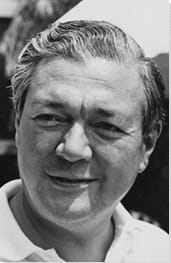Summary of Alfonso Ossorio
Ossorio was a key player in the first flowerings of the Abstract Expressionist and Art Brut movements. As an artist, he is today best remembered for his assemblages, or what he called, "Congregations". These pieces brought together an extraordinary assortment of found objects which combined - or rather "congregated" - to create original works that were at once grounded (in the ordinary world) and spiritual. However, his own achievements as an artist have tended to be overshadowed by that of "superstars" Jackson Pollock and Jean Dubuffet with whom he shared close friendships and working relationships. Heir to a considerable family fortune, Ossorio was also an early collector of Abstract Expressionism and Art Brut and he was hugely active in America in the promotion of both movements.
Accomplishments
- Ossorio's Congregations were inspired primarily by his connections to Dubuffet and his Art Brut movement, and his ambivalent attitude towards organized religion (namely Catholicism). He believed that by placing ordinary, or "crude", found objects (such as animal bones, feathers, mirrors, and bark) in unexpected juxtapositions he could affect a spiritual or magical response in the viewer. His aim was to use congregated imagery to bring his viewer to a "new realization" of the splendor of the ordinary and everyday rather than the splendor of the divine (as was the habit of historical fine art as exemplified by the Renaissance master, Michelangelo).
- Ossorio's early works, mainly drawings but also watercolors and oil painting, were finely detailed Surrealist still lifes, portraits, and landscapes. They were the art of a troubled individual who was struggling to come to terms with the conflict between his homosexuality and his Catholic faith, and his anxieties about World War Two (in which he would soon serve as a medical illustrator). Many of these pieces have drawn praise for the fine quality of their draftsmanship.
- It was through his associations with Jackson Pollock and Jean Dubuffet that Ossorio's own work became increasingly expressive and abstract. But the rise of Abstract Expressionism and Art Brut were mostly indebted to Ossorio for his role as a collector-cum-curator. He established the Signa Gallery (in the grounds of his East Hampton estate) which ran exhibitions and housed Dubuffet's collection, Compagnie de l'Art Brut. Throughout the 1950s he also curated a series of successful exhibitions in New York City that helped promote works by Pollock, Dubuffet, Willem de Kooning, Hans Hofmann, Mark Rothko, and David Smith.
- In his early '30s, Ossorio returned for the first time to his childhood home in the Philippines. The journey revived unhappy memories and resulted in a striking set of images, many realized through vivid colors and angular forms which he rendered using the wax resist technique (whereby watercolor paint in washed over a wax image or shape which repels the paint). But it was for a church mural, entitled The Angry Christ (1950), that he truly announced himself amongst local residents. His "angry" interpretation of the last judgement antagonized many of the faithful, but today attitudes have softened and The Angry Christ mural has become a site of pilgrimage.
The Life of Alfonso Ossorio
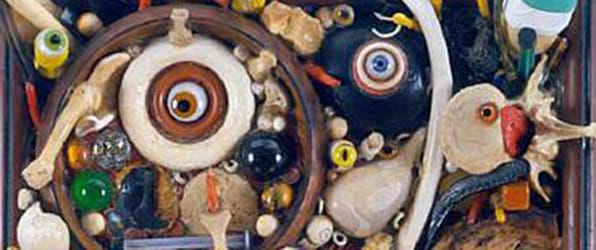
Of all his works, Ossorio's signature "Congregation" assemblages did most to encapsulate the artist's grounded spirituality, "The human being is the link between God and the material world", he said, and even "a little waste piece of plastic or a bone is just as much alive as the abstract concept of God, which is meaningless unless it is incarnated."
Important Art by Alfonso Ossorio
Skull and Corn (Death with Abundance)
In this drawing, a skull, with several cracks and missing teeth, sits in the foreground atop a pile of corn, husks, and other uprooted vegetation. Between the eyes of the skull is a small, keyhole-shaped hole. Behind the skull stand several wooden stakes around which barbed wire is wrapped, creating a small square enclosure (though nothing is visible within this enclosure). In the far background, wispy lines create the sense of a cloudy sky.
Ossorio's first works (from about 1938-49) were surrealistic explorations of the artist's psyche (at a time when he was struggling with accepting his homosexuality, as well as processing his conflicted relationship with Catholicism) and of the troubled state the world was in (particularly during World War II). His works from this period were comprised mainly of drawings, though he also completed a small number of watercolors and oil paintings. As the Michael Feldman Gallery notes, his surrealist works were "metaphysical fantasies, often bizarre and horrific, executed with meticulous draftsmanship which reflects an adoration of the Old Masters, particularly Albrecht Dürer".
Ink on paper - Michael Rosenfeld Gallery, New York, New York
The Angry Christ
Ossorio was commissioned (or perhaps more accurately, obligated) by his own father to paint this mural in the Chapel of St. Joseph the Worker (built by Czech architect Antonin Raymond), which stands on the same land as his family's sugar plantation in the Philippines. At the age of thirty-four, this was his first time back in his homeland since his move away at the age eight. It was also his first time back since "coming out" as a gay man.
This mural takes up the entire wall behind the altar and is dominated by red and blue. Christ is shown front and center with his arms outstretched. At the center of his body sits the Sacred Heart wrapped in thorns and flanked by flames. Behind Christ, supporting his arms, are two large red hands that reach down from above, meant to symbolize God's continuing presence from above. To his sides stand Joseph, John the Baptist, Mary, and John the Evangelist. The skylight below the central tower was painted with a dove, symbolizing the Holy Spirit. In style and color palette, the mural strongly recalls the works of the famous Mexican muralists Diego Rivera and Jose Clemente Orozco.
Artists Amy Lien & Enzo Camacho read further into the image: "This is supposed to be a depiction of the Last Judgement, but there is also something kinky happening here, some indulgent pleasure in the way iconography as codified communication can be read, misread, or simply received. Scanning across the mural for meaning, our eyes linger over the wounds on Christ's palms and feet, the unmistakable markers of divine suffering. They are swollen, puckered, like anuses [the "anger" of the title] is perhaps shorthand for the vibratory intensity that the mural sets in motion, activating the distance between Christ's body and our own". (It is interesting to note that a public relations representative from the Victorias Milling Company recently explained that they are seeking to rebrand the mural, as one of "strength and sympathy" and the Ossorio's Christ is in fact "a peace-loving Christ".)
Mural - Victorias City, Negros Occidental, Philippines
Golden Child
In this work, dominated by red, green, and white, Ossorio's seemingly Abstract Expressionistic brushstrokes begin to take on anthropomorphized forms upon closer inspection. Humanoid figures and hands begin to emerge from the frenzy of painterly activity. This work is a quintessential example of the emotionally charged Victorias Paintings made by the artist having returned to the Philippines in the early 1950s. The "wax-resist" technique Ossorio used in these works was inspired by Romanian Surrealist painter Victor Brauner and involved drawing in ink over dense layers of wax and watercolor. This technique allowed Ossorio to develop a personal style informed by both the aesthetics of the Abstract Expressionists (like Jackson Pollock) and the Art Brut being collected by Jean Dubuffet, and which he combined with the free-associative psychic automatism of Surrealism.
Ossorio's Victorias Paintings developed out of the internal conflicts the artist faced when returning to his homeland, namely the tension between his Catholicism, his personal acceptance of his homosexuality, and even memories of early life experiences with racism. Around this time, he was also reading the work of British-American psychoanalyst Nandor Fodor, which focus on the trauma of birth and pre-natal conditioning. Thus, many of Ossorio's Victorias Paintings deal with the themes of sexuality, birth, motherhood, and childhood. His blending of different styles and techniques deny the viewer any simple or singular path to interpretation.
Ink, watercolor, and wax on paper - Private collection
The Mother in Pink
In this work, which carries both a vertical and horizontal symmetry, various figures are visible amidst active brushstrokes, including human and animal faces and bodies. Viewed as a whole, the image resembles, in the words of art critic Roberta Smith, "a cloud dwelling pre-Columbian goddess". Indeed, the title of the work indicates that this is another of Ossorio's explorations of the concept of motherhood and childhood. However, this piece marks the point at which Ossorio's work veers stylistically away from Abstract Expressionism and becomes more indebted to Primitive Art and Art Brut.
The Mother in Pink is one of five works acquired by Jean Dubuffet to expand his collection of Art Brut. However, the acquisitions complicated Dubuffet's entire category (for Art Brut). For Dubuffet, Art Brut referred exclusively to "the works executed by people untouched by artistic culture, works in which imitation - contrary to what occurs among intellectuals - has little or no part, so that their makers derive everything (subjects, choice of materials used, means of transportation, rhythms, ways of patterning, etc.) from their own resources and not from the conventions of classic art or the art that happens to be fashionable. Here we find art at its crudest".
Inherent within Dubuffet's definition of Art Brut is, what art historian Hal Foster calls, the "primitivist fantasy", that being, the idea that children, insane adults, and people from so-called "primitive" cultures have "access to primal psychic and social processes from which the white (petit) bourgeois subject is blocked". Although works such as The Mother in Pink allude to those values, Dubuffet could not, based on his own definition, include such works within his collection. He thus developed the so-called "Annex Collection" which, as Smith explains, "effectively demot[ed] works whose makers [such as Ossorio] he considered too knowing, trained or market-centric to quite qualify as Art Brut".
Ink, wax, watercolor and gouache on paper cut out - Collection de l'Art Brut, Lausanne, Switzerland
Here and Now
Throughout the 1950s, Ossorio's work fully evolved. He began embedding found objects - such as fake jewels, glass eyes, mirror shards, shells, bones, beads, buttons, feathers, animal bones, and plastic waste - into thick impasto paintings. By the early 1960s, he was creating visionary assemblages - which he called "Congregations" - formed by these found objects. Here and Now uses such Congregations to form a symmetrical geometric pattern created by overlapping circles and semi-circles. Technical advisor and painting materials historian Martha Bergman recognizes the sacred geometry and alchemical influence present in many of these works, particularly the vesicle piscis which "represents the eye of god and the seed of life created when two circles join". Bergman explains that "Through this opening alchemists and artists believe they can channel cosmic energy into the material world".
New York's Michael Rosenfeld Gallery says of his Congregations, "Resisting immediate and complete apprehension, Ossorio's work demands time and attention from its viewers. In return, the Congregations enthrall and entrance, they pulse with energy, oscillating between the material and the transcendental, and providing a unique experience with every viewing". Indeed, there is a rare, oneiric, quality to these pieces that tempts the viewer into acts of repeat contemplation. As art historian and critic Kent Minturn puts it, in the Congregations, "Ossorio's mode of presentation is 'everything all at once'. Paradoxically, however, it is impossible for the viewer to perceive them in one act of reckoning".
Congregation of mixed media on panel - Michael Rosenfeld Gallery, New York, New York
Feast and Famine II
Ossorio continued to produce Congregations up until his death in 1990. Feast and Famine (1966), and Feast and Famine II (1967), were quite daring, as both included several horns and animal bones, and even human bone. Arts writer Jayvee del Rosario calls Feast and Famine II Ossorio's "quintessential congregation" in which all the component parts work together to form "a hellish monstrosity [which] takes the remnants of a strange feast to create a figure that evokes a monstrous sort of hunger".
As with the majority of his mature artworks, Ossorio saw his Congregations as serving a spiritual function. As he explained, "The human being is the link between God and the material world. [...] Even a little waste piece of plastic or a bone is just as much alive as the abstract concept of God, which is meaningless unless it is incarnated [One] of the things I try to do is to infuse into the inanimate a reference back to the whole hierarchy of human experience beginning with the material, using objects instead of just paint". The art historian Phillip Barcio says of this piece, "The creatures and objects that used to own these parts are dead, but they take on a second life as part of these new works of art".
As art historian Lucienne Peiry notes, When Dubuffet was reclaiming possession of the Art Brut collection after it had spent a decade in Ossorio's care, Ossorio was reluctant to give up the works. Dubuffet wrote to him, explaining that "because I am passionately attached to these collections, seeing a few pieces removed is a sacrifice equivalent to losing an eye," and asking Ossorio to "please limit" himself to keeping only four or five works. Of the four works that he chose, one was by Auguste Forestier, whose influence is evident in Feast and Famine II. Forestier was committed to a psychiatric institution when he was twenty-seven, and stayed there the rest of his life, devoting his time to creating bizarre, often monstrous "toys" that he gifted to the children at the hospital. These "toys" were sculptural assemblages made from scrap wood, leather, string, and other bits of detritus scavenged from around the hospital, as well as bones and teeth from the hospital's kitchen.
Mixed media on panel - Ayala Museum, Makati, Philippines
Untitled
In the final decade of his life, Ossorio produced a series of etchings, bringing him full circle from the Surrealist ink drawings and woodblock prints he made in the first decade of his career. Several of these, including Untitled, are extremely busy, with meandering lines, organic forms, geometric shapes, and even letters and words. For instance, close inspection of this work allows the viewer to pick out forms that look like ghosts, hands, faces or masks, and swirling shapes that recall whirlpools, or spiral galaxies, or tornados. Like looking up at clouds in the sky, inspecting this work can lead to the identification of countless entities.
Also discernible in the etching are words, including the vertically written Latin phrase "Quod dixi dixi", which translates to "What I have said, I have said". This phrase is the title of another of Ossorio's works from the same series. Other etchings in the series bear similar Latin titles, like "Quem quaeritis" ("Whom do you seek?"), while several more remain simply "Untitled". These vague titles leave the works open to infinite possibilities of interpretations. Just as on the micro level, a viewer can discover countless forms that may differ from those discovered by another viewer, so too on the macro level do the images recall different things for different viewers. Viewed from afar, for example, Untitled may appear as something cosmic, like a photograph of the surface of a moon, or of a faraway nebula, or it may appear as a topographic map of the earth, or a surrealist landscape, or even perhaps a cross-section of a cell.
Etching - RoGallery, Long Island City, New York
Biography of Alfonso Ossorio
Childhood
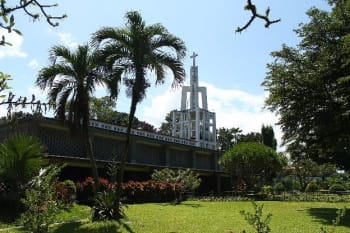
Alfonso Ossorio was the fourth of six boys born to wealthy parents Maria Paz Yangco and Miguel José Ossorio. Miguel was a banker who developed modern sugar milling in the Philippines. Though he moved away with his mother and brothers at the age of eight, Ossorio recalls some events from his upbringing in Manila quite clearly, such as the Spanish Colonial decoration in the older churches in the walled cities. He also recalls being influenced by reproductions of famous paintings in European magazines, such as Illustrated London News, and "being severely punished for cutting out pictures of paintings for my own private scrapbook".
Between the ages of eight and thirteen he attended St. Richard's Catholic preparatory school in England. Summers were spent vacationing with family in Spain and in the Basque countryside of France, near Biarritz. When he turned fourteen, he relocated to Rhode Island to study at Portsmouth Priory Benedictine School (now Portsmouth Abbey School). In 1933, he gained American citizenship and graduated from Portsmouth Priory the following year. Ossorio recalled, "I was always interested in art [...] and in what art instruction was provided. There was very little really. What there was, was of the most formal, pedestrian kind [...] Simple, fundamental, academic instruction. Of which there was no equivalent really when I came here to America. In England there was a formula for the instruction of children, government exams and you'd get little diplomas in music and art. You were taught how to draw and there was no choice as to how you would learn".
Education and Early Training
Between 1934-38, Ossorio studied fine art at Harvard University, though the academic program was highly theoretical. As he explained, "There was no painting in the academic course at Harvard, no. What practical work was done simply to give one a little more understanding of the difference between tempera painting and oil [...] It was a very, very nice group of people there but it was not the place for a creative artist to spend four years". His senior thesis, supervised by German medievalist Willem Koerner (and which gave a strong hint of some of his future thematic interests) was titled Spiritual Influences on the Visual Representation of Christ.
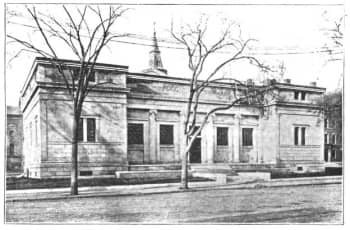
Ossorio recalled that while he was at Harvard, "Gettens and Stout were developing the restoration preservation department in the laboratories of the Fogg [Museum] The course in methods and processes of painting was fascinating. And, it was luxurious to be able to do frescoes, to do work on vellum, to do oil painting. It was quite an extraordinary course looking back on it". In his spare time, Ossorio experimented with engraving, and designed sets and costumes for Harvard's Poet's Theatre. Ossorio also began collecting art, and the Fogg Museum held an exhibition of his collection in 1936 which included works by Thomas Derrick, Eric Gill, Philip Hagreen, David Jones, and Denis Tegetmeier. In 1937 he illustrated two book covers for anthologies of Arthur Rimbaud poetry.
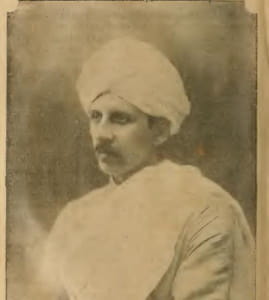
Ossorio cited one of his earliest influences as "a very well-known calligrapher and inscription carver" named John Howard Benson. Through Benson, Ossorio met English sculptor and printmaker Eric Gill, art philosophy lecturer Graham Carey, and Ananda Coomaraswamy, the theorist who introduced ancient Indian art to the West. Ossorio was also fascinated by the primitive arts collection at Harvard's Peabody Museum. As he explained, "There was no sharp line drawn between fine arts and the primitive artifacts in the Peabody Museum. In other words there was a sense of totality of human experience which I feel was very valuable. There were many people at the Fogg who still thought the fine arts were the fine arts and the rest were people interested in pots and shovels and old skeletons".
Ossorio continued his studies at the Rhode Island School of Design for nine months. He spent autumn/winter of 1939-40 in Boston where he had secured a studio space. Also in 1939, he was commissioned by the Greek Orthodox Church in Manhattan to produce a work depicting the twelve apostles. In the spring of 1940, he met Bridget Hubrecht, and the couple eloped to Taos, New Mexico a few months later. They stayed in Taos for a year and rented the home of painter and printmaker Ward Lockwood. The marriage dissolved after a year. In 1941 Ossorio held his first solo exhibition, with still lifes, portraiture and landscapes rendered in a style he described as "a kind of super realism", at the Wakefield Bookshop, home to a modest New York gallery, run by Betty Parsons. The closing date of his show coincided with the attack on Pearl Harbor, and news of the event prompted him to volunteer for the army. However, while he was waiting for his call-up, he was run over by a taxi in Madison Avenue in New York. The accident left him in hospital for over a year with a badly broken leg which meant he could not enlist until 1943.
Ossorio served as a medical illustrator for the army. He said that being in the army "was like going back to English boarding school, something you just suffered through. I wasted a lot of time sort of drifting along. But I must say that when I finally got settled working with doctors who were doing extraordinary work it was interesting. But at the same time it was a little ridiculous - I never finished basic training, never even took a rifle apart or put it together". Ossorio was stationed at Mayer General Hospital in Galesburg, Illinois, and he took advantage of the opportunity to familiarize himself with the city of Chicago.
Ossorio was honorably discharged in 1946, at which point he settled in New York, living in the famous Chelsea Hotel. In 1948, while vacationing in The Berkshires and sketching flowers in a meadow, he met ballet dancer Edward (Ted) Dragon who was there picking nosegays. The two men moved in together the following year and remained devoted companions until Ossorio's death in 1990.
![Jackson Pollock's painting <i>No. 5, 1948</i>. Ossorio recalled, “I met [Pollock] just after he had stopped drinking and so I knew him for two years as a teetotaler. I knew and saw most of him when he was not drinking at all”.](/images20/photo/photo_ossorio_alfonso_4.jpg)
In 1949, Ossorio purchased Jackson Pollock's No. 5, 1948 from Betty Parsons. When he discovered that the painting was damaged, he called Pollock, who said he should bring the painting to East Hampton so he could repair it. Ossorio, Pollock, and Pollock's wife, Lee Krasner, quickly developed a strong friendship. Ossorio said of his first encounters with Abstract Expressionism, "I disliked most of the work until I realized that Pollock was carrying on exactly in the tradition that I was interested in and in a way had bypassed the Renaissance and had gone back to a much earlier tradition of art in terms of dealing with forms and shapes dictated by the ideas rather than by appearance [...] I suddenly realized the so-called drip panels had an intensity of organization, had a message that was expressed by its physical components, was a new iconography". He began to explore abstraction, forming vital friendships with other New York School artists and Art Brut specialist Jean Dubuffet (whose work he also collected). Despite their disparate styles and concerns, Osorio took inspiration from Pollock and Dubuffet with the result that his own art evolved towards a more abstract and expressionistic style.
Mature Period
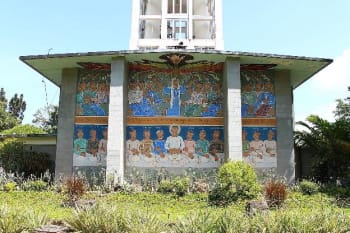
In 1949, Ossorio returned to the Philippines for the first time since childhood. He spent ten months living in a small mill town in Victorias, Negros Occidental from where he completed his mural for a church built by the Czech architect Antonín Raymond (one of Frank Lloyd Wright's apprentices). The mural was titled The Angry Christ and initially caused controversy amongst local residents. Ossorio said of the project, "The iconography is very complex [...] It is the Last Judgment, it's a continual last judgment with the sacrifice of the mass that is the continual reincarnation of God coming into this world. And it worked out beautifully because the services take place usually very early because of the heat and the church had been oriented so that the sun would come in and strike the celebrant as he stood at the altar with this enormous figure behind him. It worked, if I do say so myself. And although they [the local population] loathed it at the time it was done it is almost now a place of pilgrimage".
In 1950, Ossorio painted Golden Child which represented, not only his evolution towards abstraction, but also his interest in the writings of the psychoanalyst Nandor Fodor's who, in his book, The Search for the Beloved - A Clinical Investigation of the Trauma of Birth and Pre-Natal Conditioning (1949), had suggested that a pregnant woman had a telepathic-like relationship with her unborn child. In 1951 he travelled to Paris to visit Dubuffet (who was at that time writing a monograph on Ossorio titled, Peintures intiatiques d'Alfonso Ossorio) whose exploration of, and work with, Art Brut, and particularly the art of children, prisoners, and the "mentally insane", tallied with the ideas of Fodor and pointed to future unexplored avenues for Ossorio.
Commenting on this period of his career, New York's Michael Rosenfeld Gallery (in its catalogue notes for its Ossorio retrospective) observed that, "Inspired by the flood of memories that returned to him while in Victorias, Ossorio [...] produced a stunning set of wax resist works on paper addressing the subjects of childhood, birth, sexuality, mythology, and religion. Notable for their hot, intensely saturated colors, pierced or jagged formal characteristics and pulsating energy, the series was exhibited at Studio Paul Facchetti Paris [...] after Dubuffet introduced Ossorio to eminent critic and curator Michel Tapié".
Ossorio had purchased a sixty-acre Italianate mansion in East Hampton, New York, called "The Creeks" in 1951. It would remain his primary residence for the rest of his life. Between 1951-61, The Creeks housed Dubuffet's collection, Compagnie de l'Art Brut. In fact, the 1950s saw Ossorio emerged as a key figure within the Abstract Expressionist movement, through both his own art, and in the capacity of curator. In 1951, for instance, he wrote the introduction to the catalogue for Pollock's "Black and White" exhibition at the Betty Parson Gallery, and later in the decade curated a series of exhibitions, including works by Pollock, Dubuffet, Willem de Kooning, Hans Hofmann, Mark Rothko, and David Smith, at New York's Executive House.
On August 11, 1956, Pollock died in a car crash on his way to visit Ossorio at The Creeks. The following summer, Ossorio, with fellow artists and East Hampton residents John Little and Elizabeth Parker, decided that "there was a definite need for a contemporary gallery in East Hampton". They started the Signa Gallery and ran exhibitions and symposia over four consecutive summers. Ossorio said of the Singa, "It wasn't a glorious success but it was not a failure. It was reviewed in The Times and we had very serious exhibitions [...] Our exhibitions dealt with our contemporaries, and it involved many prominent painters: Brooks, Guston, Kline, Marca-Relli, Pollock, De Kooning".
Late Period and Death
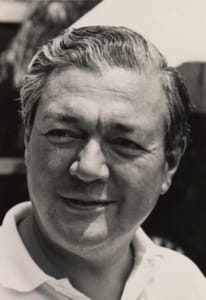
In the early 1960s, Ossorio began to work on his signature assemblages which he referred to as "congregations". For these pieces he brought together an array of found objects - from driftwood and feathers to glass-eyes - into one mind-boggling display. The term "congregations" has obvious religious connotations, but Ossorio also chose the term because it alluded to a more general feeling and that the act of placing unconnected objects next to one another was for him a spiritual or magical act. As he once said about his Congregations, "Religion must aim to inspire awe, to awe man with the splendor of his existence. By a set of unexpected juxtapositions, it must put you in a state of realization of how splendid things can be, even if they are horrible".
From the mid-1960s, Ossorio continued to produce new work and exhibited extensively in the United States and abroad. He also dedicated a significant amount of time to developing his property at The Creeks, beginning to collect rare evergreens and other trees (by the time of his death in 1990, his arboretum had grown to include around six hundred specimens). In the 1970s, he began to decorate the arboretum with large, brightly colored sculptures which he made from found objects and poured concrete. He enjoyed taking visitors on guided tours of the property in a golf cart and referred to the grounds as "the eighth wonder of the horticultural world".
Ossorio passed away due to complications from a stroke in New York City in 1990. Half his ashes were scattered at The Creeks, and nine years later, the other half were spread at Green River Cemetery in East Hampton, where Pollock was buried in 1956. After Ossorio's passing, Edward "Ted" Dragon sold The Creeks along with several works by Ossorio.
The Legacy of Alfonso Ossorio
Ossorio occupies a unique position in the history of twentieth century American art. His own artistic output had often been, if somewhat harshly, overshadowed by his "superstar" friends, Jackson Pollock and Jean Dubuffet. And perhaps Ossorio's status has been reduced due to the scope and variety of his work, but as art historian Edward Lucie-Smith noted "Because Ossorio was independently wealthy, he could please himself. He had no need to conform to whatever stylistic rules might be in force at the moment when a particular work was being made [...] In fact Ossorio's great strength as an artist lies in his ability to conflate different cultures, without being absolutely the client or prisoner of any of them".
It might also be to his detriment as an artist that he occupied dual roles. He is widely recognized for the part he played in the promotion of Abstract Expressionism and Art Brut in America. His wealth allowed him to become an important collector and he was the guardian of Dubuffet's collection for a decade and exhibited pieces next to his own works and that of New York School luminaries. Indeed, His luxurious East Hampton estate provided the setting for exhibitions, symposia and near-nightly social gatherings making it one of the most important venues in the myth making of the new avant-garde.
Influences and Connections

-
![Paul Cadmus]() Paul Cadmus
Paul Cadmus -
![Albrecht Dürer]() Albrecht Dürer
Albrecht Dürer -
![Victor Brauner]() Victor Brauner
Victor Brauner - Jared French
-
![Jackson Pollock]() Jackson Pollock
Jackson Pollock -
![Jean Dubuffet]() Jean Dubuffet
Jean Dubuffet -
![Julian Schnabel]() Julian Schnabel
Julian Schnabel -
![Clyfford Still]() Clyfford Still
Clyfford Still - Michel Tapié
- Riel Hilario
-
![Jackson Pollock]() Jackson Pollock
Jackson Pollock -
![Jean Dubuffet]() Jean Dubuffet
Jean Dubuffet -
![Julian Schnabel]() Julian Schnabel
Julian Schnabel -
![Clyfford Still]() Clyfford Still
Clyfford Still - Michel Tapié
Useful Resources on Alfonso Ossorio
- Angels, Demons, and Savages: Pollock, Ossorio, DubuffetOur PickBy Klaus Ottmann and Dorothy Kosinski
- Alfonso Ossorio: Masterworks from the Collection of the Robert U. Ossorio FoundationBy Michael Rosenfeld Gallery
- Alfonso OssorioBy B. H Friedman
- From the Molecular to the Galactic: The Art of Max Ernst and Alfonso OssorioBy Jessica Dallow
- Alfonso Ossorio: CongregationsBy Klaus Kertess
- Alfonso Ossorio: The Shingle FiguresBy Michael Rosenfeld Gallery
- Alfonso Ossorio, 1940-1980By Enez Whipple
- Reflection and Redemption: The Surrealist Art of Alfonso Ossorio, 1939-1949Our PickBy Michael Rosenfeld Gallery
 Ask The Art Story AI
Ask The Art Story AI